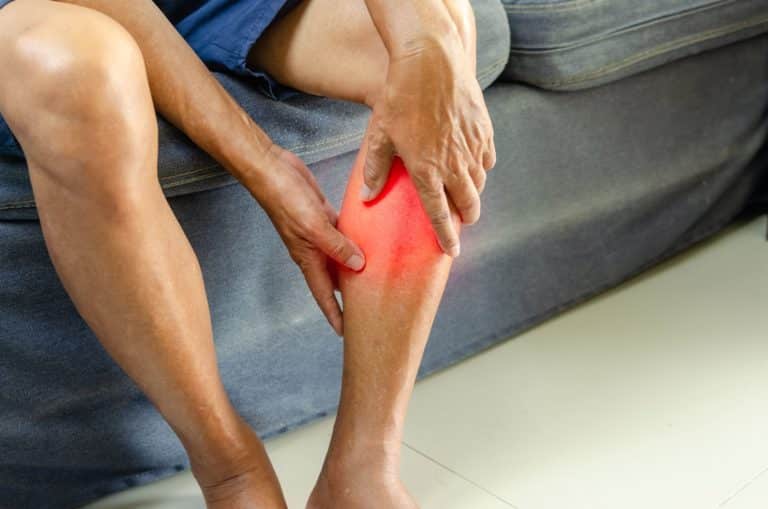
Meet Rémi Senal
On the occasion of the French Full Contact Championships, we interviewed Rémi Senal, a fan of STIMCARE products.
Free delivery on orders above €150

The knee joint connects the thigh bone, the femur, to the tibia and patella. The joint contact surface is not optimal, since the head of the femur is rounded, while that of the tibia is rather flat. MenisciThe crescent-shaped discs bridge these structural differences. The two tissue composed of fibrocartilage allow the load to be distributed over the entire joint and are as follows:
The menisci are attached to the joint capsule, but remain mobile. With the cruciate and lateral knee ligaments, menisci ensure knee stabilityThey cushion shocks and promote fluidity of movement.

Visit knee injuries are commonplace among athletes. Whatever the activity, the joint is always under extreme stress.
There are different types of meniscus injuries whose management varies according to the injury, activity and age of the patient. A bad fall, extreme stress on the joint or poor positioning can result in severe pain localized between the femur and the tibia.
It is present on palpation and becomes more intense with movement, complete squatting is difficult or impossible and the shows that the knee is locked. Edema may occur, due to synovial effusion in the joint.
This type of meniscus injury is mainly seen in athletes:
Whatever the type of lesion, it's essential to consult a doctor as soon as the first symptoms appear.

Visit trauma such as knee torsion or abnormal flexion, are often the cause of meniscus damage. Sometimes, however, a simple crouched position prolonged use with sudden lifting causes injury. Wear and tear is an aggravating factor, and repeated micro-traumas throughout life lead to degenerative lesions. Finally, a malformation of the genu varum or genu valgum type favours the appearance of disturbances.
Simply apply the patch by following our tutorial videos, available in French only. here to guide you every step of the way.
If you have any questions about how to apply the patch, send your request to sante@stimcareonline.com. A therapist trained and certified to apply STIMCARE patches will take the time to answer your questions.

Depending on the patient's age, activity or history, surgery is not always indicated. Some injuries can be managed more naturally, and here are a few examples of effective pain relief for meniscus injuries:
Also known as devil's claw, this medicinal plant native to South Africa is known for its anti-inflammatory properties.
Personalized exercises and ongoing rehabilitation help strengthen the muscles and promote joint stability.
The natural composition of the patches is based on eNOsyntex technology, which acts effectively on the damaged area. Composed of natural mineral oxides, the patches reflect the infrared rays emitted by the body like a mirror. This concentration stimulates micro-circulation and improves oxygen supply. Accumulated toxins are drained, tissue reconstruction is promoted and pain is soothed. The patches promote recovery.
Damage to the meniscus can occur after an accident. trauma or poor movement. Visit STIMCARE patches help you to effectively relieve pain and promote healing of damaged tissue. The good news is that you can also use them after surgery! Non-transdermal, the patches work naturally to enhance tissue regeneration.

On the occasion of the French Full Contact Championships, we interviewed Rémi Senal, a fan of STIMCARE products.

A study of trail runners was carried out during two 21 6 kilometer races.
Measurement of subjective fatigue proprioception strength parameters before, during and after the trail to identify recovery effects

A muscle tear can be benign in the case of a strain, but can be more serious if the muscle is partially or totally torn. How to prevent and treat muscle tears We tell you more in this article.
Do you have any questions about using patches?
Stimcare - Tortel Industries, 2761 Les Rouvières, 26220 Dieulefit, France (excluding French overseas departments and territories)